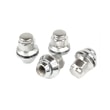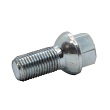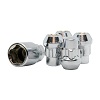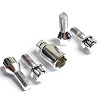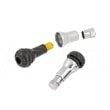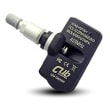Car fuel consumption – how to calculate the average fuel consumption of a car?
For many drivers, fuel costs are one of the largest expenses related to car operation. Prices for gasoline, diesel, and LPG can fluctuate from week to week, and even a slight increase in fuel consumption translates into a noticeable burden on the household budget. Understanding how much fuel your car actually uses is the first step towards rational budgeting and a conscious approach to driving.
Average fuel consumption is an indicator that allows you to monitor your vehicle's technical condition, predict travel costs, and compare the efficiency of different models. The ability to accurately calculate it gives drivers real control over their expenses and allows them to make changes that can result in tangible savings.
The following guide is a comprehensive discussion of the topic – from the basic definition of fuel consumption, through analysis of manufacturer data and industry reports, to practical measurement methods and ways to reduce fuel consumption in everyday driving.
What is Fuel Burn? – Definition and Basic Units

Definition of fuel consumption in the automotive context
Fuel consumption is the amount of fuel an engine uses to travel a given distance or operate for a given period of time. The most common value is per 100 kilometers. It is one of the basic parameters describing a vehicle's efficiency.
High fuel consumption can be a result of both operating conditions and the vehicle's technical condition. Low fuel consumption, on the other hand, is a sign of a vehicle's good condition and an economical driving style.
Units of measurement – liters per 100 km and others
In Poland and most of Europe, the most commonly used unit is l/100 km – the number of liters of fuel needed to travel 100 kilometers.
In other regions of the world you can also find:
- MPG (miles per gallon) – miles per gallon, used in the US and UK.
- km/l – kilometers per liter, popular in some Asian countries.
Regardless of the unit, a car's fuel consumption is directly related to the costs of its operation - the lower the fuel consumption, the lower the fuel costs.
Is car manufacturer data sufficient to calculate fuel consumption? – Reality vs. laboratory dreams
Measurement standards: NEDC vs. WLTP – differences and importance
For many years, the NEDC (New European Driving Cycle) procedure was in effect in Europe. Tests were conducted in laboratory conditions, on roller skates, at low speeds and gentle acceleration. The result? The results were optimistic and often deviated from real-world fuel consumption in everyday driving.
In 2017, a new standard , WLTP (Worldwide Harmonized Light Vehicles Test Procedure) , was introduced. It includes:
- higher maximum and average speeds
- greater acceleration
- different equipment variants (e.g. influence of rim size, air conditioning)
- longer test duration
While WLTP better reflects reality, it is still measured under controlled conditions, not on a regular road.
Why do the manufacturer's data differ from the actual fuel consumption?
The reasons include:
- driver's driving style
- road conditions (traffic jams, city traffic, driving in the mountains)
- ambient temperature
- car load (number of passengers, luggage)
- technical condition of the vehicle
- use of air conditioning and additional power consumers
Factory data should be considered as a reference and not a guaranteed value.
How to Use Industry Fuel Economy Reports – Authenticated Experiences from Other Drivers
Types of reports and their credibility
The following are helpful in assessing real fuel consumption:
- road tests conducted by automotive magazines and portals
- reports from consumer organizations
- databases created by drivers, e.g. Spritmonitor.de, autocentrum.pl
Their advantage is a large number of samples and the ability to filter by model, engine, or fuel type. The disadvantage is a certain subjectivity of the results.
How to interpret data from industry reports?
It's worth comparing the average values from the reports with your own driving style and vehicle usage conditions. If a given model's average fuel consumption is 6.5 l/100 km in the user database, but you mainly drive in city traffic, you should expect a higher result.
How Does an On-Board Computer Calculate Fuel Consumption? – Your Electronic Assistant Under the Microscope
Sensors and algorithms – the basis of the on-board computer
The on-board computer uses data from many sensors, including:
- mass air flow meter (MAF)
- lambda probes
- intake manifold pressure sensor (MAP)
- engine and vehicle speed sensors
- throttle position sensor
- injector opening time
On this basis, it calculates the amount of fuel injected and converts it into distance or engine operating time.
On-board computer measurement accuracy – limitations and corrections
The difference between the on-board reading and the actual reading is typically 0.3–0.8 l/100 km. This is influenced by factors such as sensor calibration, vehicle age, and fuel quality. Some models allow for manual adjustments to the readings.
How to Calculate Your Car's Fuel Consumption Yourself – The "Under the Cap" Method
The "from tank to tank" method – step by step
- Fill the tank completely, preferably to the top.
- Note the odometer reading.
- Drive at least 200-300 km under normal conditions.
- Fill up the tank again.
- Divide the number of liters of fuel filled by the distance traveled and multiply by 100.
Pattern:
(liters burned / km traveled) × 100 = fuel consumption in l/100 km.
Fuel cost and range calculation
- Fuel cost : (fuel consumption / 100) × distance × fuel price.
- Range : (tank capacity × 100) / fuel consumption.
What Affects Your Car's Average Fuel Economy? - Understand What's Eating Your Fuel
Driver's driving style
Aggressive acceleration, frequent braking, and high-revving are a surefire path to increased fuel consumption. Smooth, predictable driving can save up to 15% on fuel.
Road and environmental conditions
The city means traffic jams and frequent stops, which increases fuel consumption. On the highway, at a constant speed, a car burns less fuel, but at very high speeds, air resistance significantly increases fuel consumption.
Technical condition of the vehicle and equipment
Low tire pressure, worn filters, faulty injectors or excessive ballast in the trunk are factors that can increase fuel consumption by up to 1–2 l/100 km.
How to reduce fuel consumption with ecodriving? – Save consciously!
Basic principles of ecodriving
Fuel-efficient driving in the spirit of ecodriving is primarily based on maintaining a smooth pace and avoiding sudden maneuvers , such as sharp acceleration or sudden braking. Proper gear selection is also crucial – for diesel engines, optimal gear changes occur at around 2,000 rpm , while for petrol engines, they occur at around 2,500 rpm . During longer stops , for example, in traffic jams or before railway crossings, it's a good idea to turn off the engine to avoid unnecessary fuel consumption.
Equally important is proper vehicle use . Regularly checking tire pressure helps maintain low rolling resistance, while removing unnecessary weight , including unused roof racks , reduces vehicle weight and improves aerodynamics. Limiting air conditioning use can also yield noticeable savings, especially when driving in the city.
It's also worth adapting your driving style to current conditions . Avoiding short trips on a cold engine helps reduce fuel consumption, as the engine uses more fuel in the initial phase of operation. A good solution is to combine several shorter trips into one longer route . Planning a trip with the help of navigation or knowledge of local roads allows you to avoid traffic jams and choose optimal routes , which further supports fuel-efficient vehicle operation.
How does the fuel economy calculator work? – Easy and intuitive!
Our fuel calculator is designed to be self-explanatory from the first use. Simply enter the kilometers traveled and the liters of fuel used (from the last fill-up). The fuel price per liter field is optional – add it if you want to know the costs immediately. After entering the data, the fuel consumption calculator will automatically calculate the results without the need to refresh the page.
The results are presented in three easy-to-read blocks. First, you'll get average fuel consumption in l/100 km (calculated using the formula: liters ÷ kilometers × 100), giving you an immediate idea of your driving economy. Second, the calculator will show you the cost of your trip – we multiply the liters used by the given fuel price, making it easier to calculate fuel costs before or after your trip. Third, if you also enter the tank capacity , the calculator will indicate the expected range on a full tank (formula: tank capacity × 100 ÷ l/100 km), allowing you to better plan your stops and expenses.
Thanks to this, the fuel consumption calculator provides all the most important information: actual fuel consumption , route cost and range , and you get a quick, practical overview of how much each kilometer really costs.
Why use a calculator? – Convenience and accuracy at your fingertips
Using the " Car Fuel Economy Calculator " tool is a simple way to obtain precise fuel consumption and travel cost data in seconds. Simply enter basic information, and the system will automatically perform all calculations— without the risk of human error that often occurs with manual calculations.
The fuel consumption calculator also allows you to quickly compare different scenarios – you can see how the cost of a trip would change with a different fuel price, a longer distance, or a modified driving style. This makes it easy to plan both daily commutes and longer trips.
Regularly using the calculator is not only convenient but also an effective way to monitor fuel consumption over time. By analyzing the results, you can make conscious changes to your driving technique, translating into real savings and more efficient vehicle use.




 Modern design
Modern design Perfect fit
Perfect fit High durability
High durability Free shipping within 24 hours
Free shipping within 24 hours
 Individual project
Individual project Dedicated caregiver
Dedicated caregiver
